Cigar Review: Muestra de Saka Nacatamale
11 Dec 2017
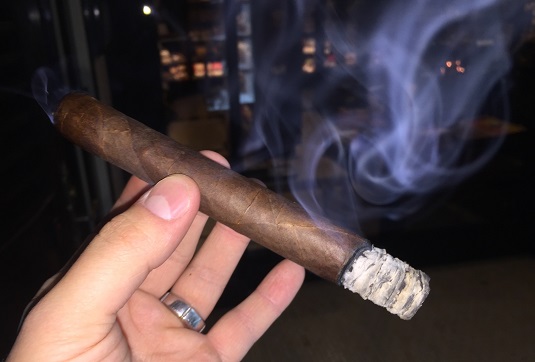
“A muestra is the vision of the ligador and torcedor realized, it is the promise of a new experience and possibly the key to financial success for the fabrica,†says Steve Saka, founder and Master Ligador of Dunbarton Tobacco & Trust. “Muestras are hoarded and coveted by not only their makers, but by the cigar smokers who seek to catch a glimpse into the cigar maker’s soul within their smoke.â€
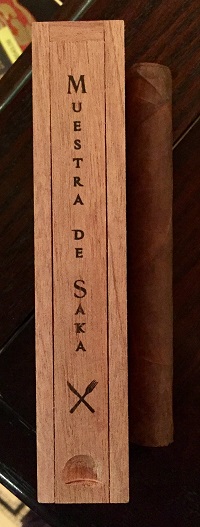 In its young history, Dunbarton has amassed acclaim from seasoned cigar devotees that is as well-deserved as it is widespread. Sought-after brands like Sobremesa and Mi Querida are virtually universally praised by cigar veterans who trek to meet Saka at retailer events and hang on his every Facebook post. So when Saka introduces a “muestra,†you have to take notice.
In its young history, Dunbarton has amassed acclaim from seasoned cigar devotees that is as well-deserved as it is widespread. Sought-after brands like Sobremesa and Mi Querida are virtually universally praised by cigar veterans who trek to meet Saka at retailer events and hang on his every Facebook post. So when Saka introduces a “muestra,†you have to take notice.
Nacatamale is the second muestra from Dunbarton. It was announced in July and is intended to be “considerably more robust†than its predecessor, Exclusivo. It is made in the “old farm†style, meaning all the filler tobaccos are from a single operation (in this case, an undisclosed farm in Jalapa, Nicaragua).
Nacatamale (6 x 48) comes flawlessly presented in an individual wooden coffin. I paid over $20 for mine (including insane tobacco taxes here in Chicago; the MSRP is $15.95). Inside is a gorgeous, beautifully constructed cigar with a dark Ecuadorian Habano wrapper. It has tight seams, a firm feel, thin veins, and a smooth cold draw. The pre-light notes remind me of green raisin with milk chocolate and cinnamon.
After setting an even light with a wooden match, a spicy, bold, well-balanced introductory flavor emerges that reminds me of cayenne heat, dark chocolate, black coffee, and sweet nougat. The medium- to full-bodied profile steps off the accelerator as the midway point approaches. Here, hints of cinnamon, cedar, cream, and leather play a more active role, and the spice is more subdued. The finale witnesses a reprise of spice with notes of black pepper, dry oak, espresso, cedar, and a frothy, marshmallowy sweetness at the fore.
As you would expect from Saka (and any cigar at this price point), the combustion properties are sublime. The burn line stays straight and true from light to nub with torch touch-ups completely unnecessary. In addition, the draw is smooth, the ash holds firm, and the smoke production is outstanding.
What makes Nacatamale so outstanding—and, yes, it is absolutely outstanding—is not any individual flavor. This cigar is a great example of how the whole can be greater than the sum of its parts. The overall balance, complexity, and harmony is simply on point. That Saka handicapped himself by relegating the entire filler recipe to one farm and still composed a symphony of deliciousness… well, that’s head-scratching. Pony up and grab one of these while you still can. Any rating besides five stogies out of five would be inappropriate.

[To read more StogieGuys.com cigar reviews, please click here. A list of other five stogie-rated cigars can be found here.]
–Patrick A
photo credit: Stogie Guys

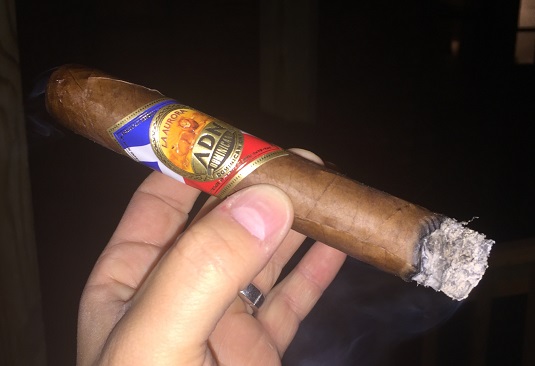
 “Andullo is created by taking cured tobacco leaves, wrapping them tightly in palm tree pods with rope, and hanging them to ferment for a period of two years,†reads the article. “The process turns the tobacco into dark, hard logs resembling big sausages… Andullo is made, not grown. It’s the process that makes the tobacco distinctive, not the seed variety or its growing conditions.â€
“Andullo is created by taking cured tobacco leaves, wrapping them tightly in palm tree pods with rope, and hanging them to ferment for a period of two years,†reads the article. “The process turns the tobacco into dark, hard logs resembling big sausages… Andullo is made, not grown. It’s the process that makes the tobacco distinctive, not the seed variety or its growing conditions.â€
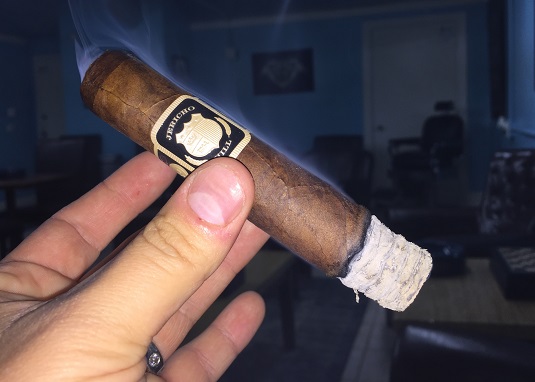
 Let’s add Johnny Cash. Jericho Hill was “inspired by Cash’s rendition of ‘Cocaine Blues,’ found on Cash’s 1968 live album, At Folsom Prison,†according to the Crowned Heads
Let’s add Johnny Cash. Jericho Hill was “inspired by Cash’s rendition of ‘Cocaine Blues,’ found on Cash’s 1968 live album, At Folsom Prison,†according to the Crowned Heads 
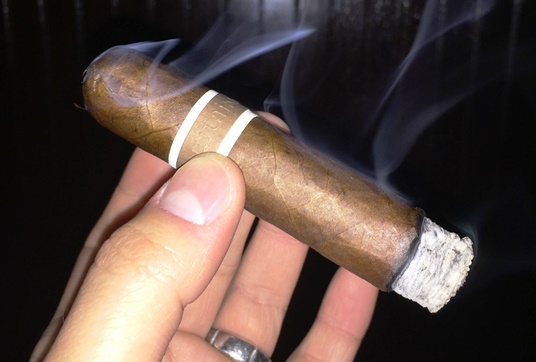
 One strategy for beating the winter-time blues is to limit your exposure to the elements by smoking shorter cigars. And if you’re looking to pack a mighty punch into a stout format, one excellent option is the Aquitaine Knuckle Dragger from RoMa Craft Tobac.
One strategy for beating the winter-time blues is to limit your exposure to the elements by smoking shorter cigars. And if you’re looking to pack a mighty punch into a stout format, one excellent option is the Aquitaine Knuckle Dragger from RoMa Craft Tobac.
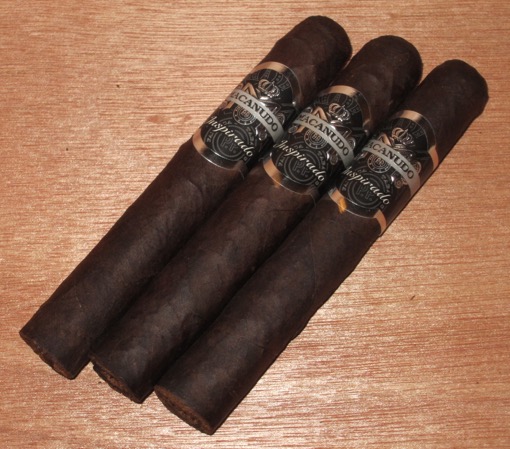
 Macanudo’s Inspirado line first debuted in 2004 for international markets; it wasn’t available in the U.S. until 2014. Keep in mind, unlike in the U.S.—where General Cigar/Scandinavian Tobacco Group (STG) also owns the rights to the Partagas, Punch, Hoyo de Monterrey, and other trademarks that originated in Cuba—the Cuban government still controls those marks overseas. That means Macanudo is far and away the best-known brand owned by STG outside the U.S. This may account for why Macnudo Inspirado was pushed elsewhere.
Macanudo’s Inspirado line first debuted in 2004 for international markets; it wasn’t available in the U.S. until 2014. Keep in mind, unlike in the U.S.—where General Cigar/Scandinavian Tobacco Group (STG) also owns the rights to the Partagas, Punch, Hoyo de Monterrey, and other trademarks that originated in Cuba—the Cuban government still controls those marks overseas. That means Macanudo is far and away the best-known brand owned by STG outside the U.S. This may account for why Macnudo Inspirado was pushed elsewhere.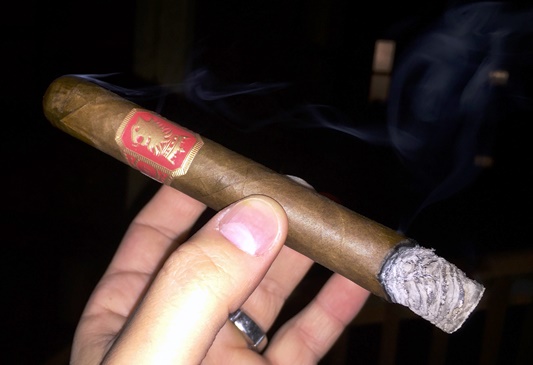
 Sun Grown sports an Ecuadorian Sumatra sun-grown wrapper around a Connecticut stalk-cut sun-grown Habano binder and Nicaraguan filler tobaccos. The filler includes one leaf of “extensively aged Ligero from the Nueva Segovia region along the border of Honduras… selected to enhance the strength of the blend.â€
Sun Grown sports an Ecuadorian Sumatra sun-grown wrapper around a Connecticut stalk-cut sun-grown Habano binder and Nicaraguan filler tobaccos. The filler includes one leaf of “extensively aged Ligero from the Nueva Segovia region along the border of Honduras… selected to enhance the strength of the blend.â€
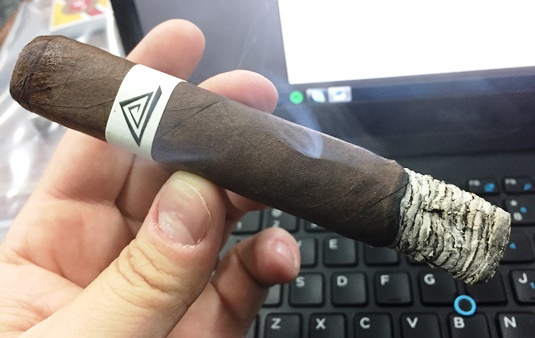
 For the uninitiated, Fable comes from the RoMa Craft’s home factory in EstelÃ, Nicaragua: Fabrica de Tabacos NicaSueño S.A. The brand debuted in early 2016 and is made for owners Sean Kremenetski and Mitul Shah.
For the uninitiated, Fable comes from the RoMa Craft’s home factory in EstelÃ, Nicaragua: Fabrica de Tabacos NicaSueño S.A. The brand debuted in early 2016 and is made for owners Sean Kremenetski and Mitul Shah. Patrick Ashby
Co-Founder & Editor in Chief
Patrick Ashby
Co-Founder & Editor in Chief Patrick Semmens
Co-Founder & Publisher
Patrick Semmens
Co-Founder & Publisher George Edmonson
Tampa Bureau Chief
George Edmonson
Tampa Bureau Chief